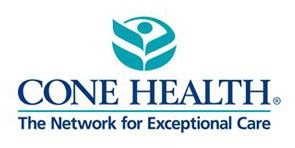
8/16/2018
Cone Health Greensboro, NC
Pharmacist-driven multimodal analgesia initiative to decrease PCA opioid use in patients with total knee replacement
Overview
 The literature shows that historically, older orthopedic patients often require lower opioid doses in comparison to those given to younger patients. Utilizing patient-controlled analgesia (PCA) for orthopedic patients also results in significantly higher opioid exposure compared to nurse-administered doses. Multimodal analgesia regimens reduce the potential for oversedation. This project was a multimodal analgesia approach to decrease PCA opioid use for the Cone Health orthopedic population. This was in response to a significant amount of oversedation cases in patients with total knee replacement. Pharmacist intervention, education of providers, and order set evaluation were conducted to change opioid prescribing practices for these patients. The multimodal protocol was developed by the Triad Orthopedic Management (TOM) team and included scheduled low dose Oxycontin, scheduled Celebrex, nerve block and local anesthetics, and opioids ordered for breakthrough pain. Multimodal analgesia was initiated prior to surgery and continued post operatively, including pre-operative non-analgesia medications and local anesthesia block and post-operative setting scheduled non-opioids, scheduled low dose oral opioids, and a non-PCA rescue opioid. These interventions were driven by provider-approved changes to operative order sets in the electronic health record, education on analgesia equivalency, and appropriate characterization of patient pain levels.
The literature shows that historically, older orthopedic patients often require lower opioid doses in comparison to those given to younger patients. Utilizing patient-controlled analgesia (PCA) for orthopedic patients also results in significantly higher opioid exposure compared to nurse-administered doses. Multimodal analgesia regimens reduce the potential for oversedation. This project was a multimodal analgesia approach to decrease PCA opioid use for the Cone Health orthopedic population. This was in response to a significant amount of oversedation cases in patients with total knee replacement. Pharmacist intervention, education of providers, and order set evaluation were conducted to change opioid prescribing practices for these patients. The multimodal protocol was developed by the Triad Orthopedic Management (TOM) team and included scheduled low dose Oxycontin, scheduled Celebrex, nerve block and local anesthetics, and opioids ordered for breakthrough pain. Multimodal analgesia was initiated prior to surgery and continued post operatively, including pre-operative non-analgesia medications and local anesthesia block and post-operative setting scheduled non-opioids, scheduled low dose oral opioids, and a non-PCA rescue opioid. These interventions were driven by provider-approved changes to operative order sets in the electronic health record, education on analgesia equivalency, and appropriate characterization of patient pain levels.
Key Elements of Success
Support from surgery and anesthesia for establishing these pilot programs was crucial. Interdisciplinary support, led by nursing, allowed for continued collaboration with surgery and anesthesia. Support from IT was also important. Clinical decision making was largely aided by the development of order sets by IT that encouraged prescribing with multimodal strategies. Once these order sets were approved by physician leadership, they proved to be a helpful tool to help drive prescribing practices.
Impact on Patient Outcomes
The percent of patients requiring naloxone rescue after surgery decreased from 2.97 to 0.095 percent. The overall number of patients on PCA-dosed opioids also decreased from approximately 35 to 40 patients daily to less than 20 patients daily.
Role of the Pharmacy and Pharmacists
Pharmacists were crucial in educating providers and monitoring prescribing trends. Pharmacist intervention included developing education for providers and determining optimization of order sets. Pharmacy leadership was necessary to monitor trends in prescribing practices following implementation and to monitor reported adverse events. Pharmacists were also crucial in encouraging appropriate use of multimodal analgesia, particularly as it relates to IV acetaminophen. After implementation, use of IV acetaminophen increased significantly and resulted in a marked financial impact. All pharmacists received education to follow up on IV acetaminophen orders and specific parameters were established to restrict IV acetaminophen use to the surgical population and those with contraindications to oral agents, NSAIDs, etc. Clinical pharmacists were also educated to more closely monitor pain assessments for our orthopedic population, ensuring appropriate maintenance of multimodal therapies and to make recommendations for decreased opioid use when pain scores were low. Pharmacy worked closely with nursing colleagues on the floor to continually encourage multimodal pain strategies.
Lessons Learned
After implementation of this program other orthopedic service lines were motivated to move away from scheduled opioids. This led to an increase in scheduled IV acetaminophen use for this population. An MUE was conducted to evaluate outcomes and found no difference in post-operative opioid requirements when oral or IV acetaminophen was used.
Budget & Resource Allocation
This was not a new budgeted program. It was led by Cone Health clinical managers, nursing leadership, and a medication safety manager.
Future Goals
Future goals include continued optimization of IV acetaminophen use, collaboration with nursing to give PRN opioids in the lowest dose range initially, improving transitions of care from PACU to the floor, and educating clinicians on opioid equivalency. This multimodal protocol was implemented in the orthopedic and neurosurgery service lines and there are plans for expansion to other areas.
Reference
1American Hospital Association, Stem the Tide: Addressing the Opioid Epidemic